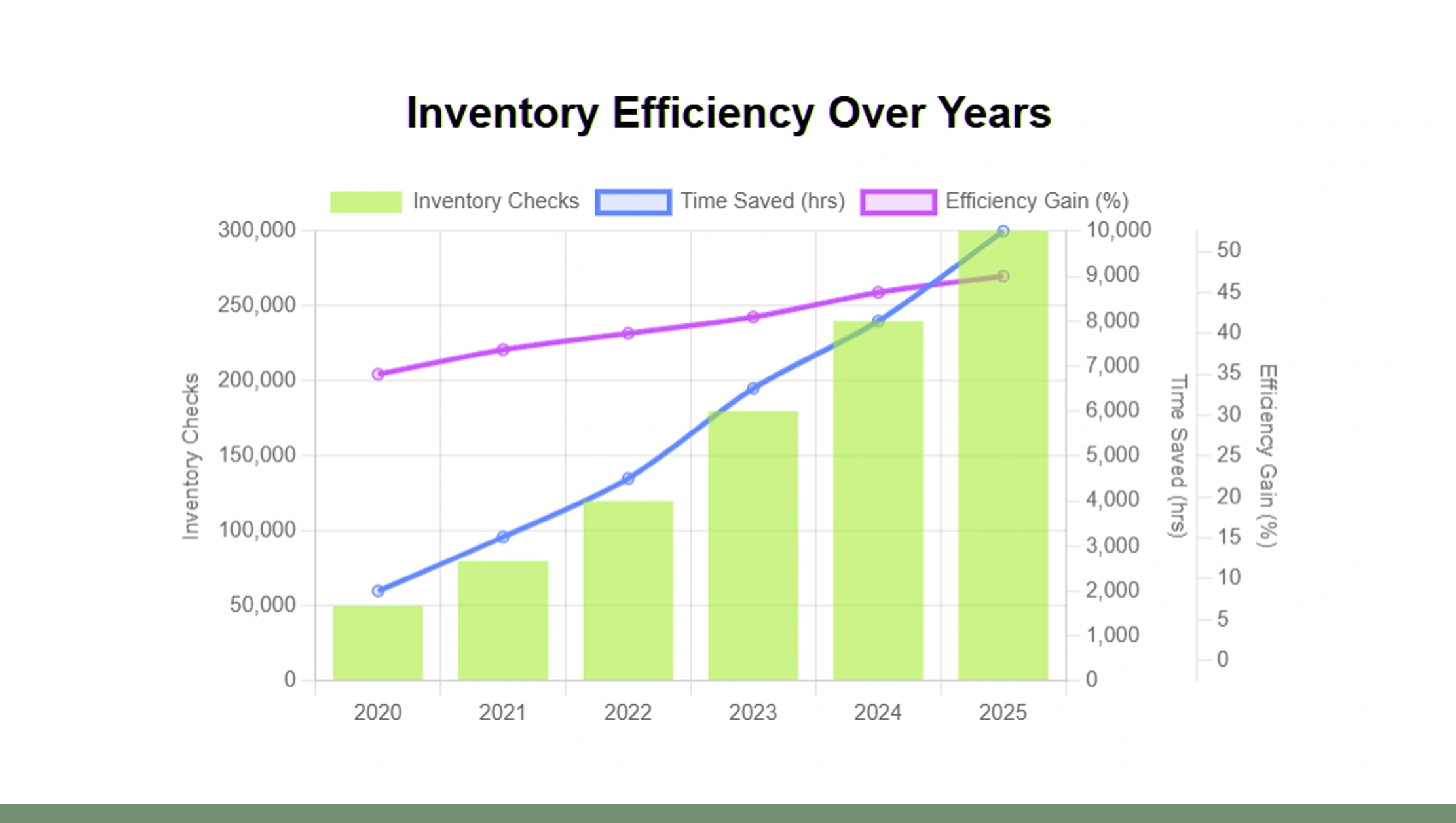Scrape Macy’s Product Availability & Inventory Insights

Introduction
In today’s fast-paced retail environment, staying ahead of competitors requires timely and accurate data. Scraping Macy’s product availability and inventory for competitive insights has become essential for retailers, analysts, and market strategists. With the rise of eCommerce, Macy’s inventory fluctuations, product launches, and pricing strategies can directly impact business decisions. Leveraging Macy's Scraping API, companies can automate the extraction of real-time product availability, monitor competitor stock levels, and identify trends across multiple categories. This not only saves time but also ensures precision in capturing data that reflects the true state of Macy’s catalog.
Businesses can use the data to understand consumer behavior, optimize pricing models, and enhance supply chain efficiency. Automated solutions reduce manual effort and minimize errors, enabling teams to focus on strategy rather than data collection. From clothing and accessories to home goods, knowing what is in stock and when it becomes available provides a competitive edge. By adopting Scraping Macy’s product availability and inventory for competitive insights, organizations can make data-driven decisions that improve profitability and operational efficiency.
Macy's Data Scraper Overview

The Macy's Scraping API is an advanced, automated solution designed to extract Macy’s product stock for market research efficiently. This tool is invaluable for businesses aiming to monitor product trends, track inventory changes, and gain actionable market insights without the manual labor typically required in data collection. By leveraging automated web scraping, retailers can access real-time information about products, including pricing, availability, categories, promotions, and special deals, providing a 360-degree view of Macy’s offerings.
Between 2020 and 2025, businesses that implemented automated scraping tools reported a measurable improvement in operational responsiveness and data accuracy. For example, companies using such solutions saw a 30% faster reaction time to inventory fluctuations and a 25% improvement in stock optimization, allowing them to respond dynamically to changing market conditions. This is particularly critical in retail, where pricing and availability can shift rapidly due to promotions, seasonal demand, or competitor actions. The Macy's Data Scraper ensures that businesses have consistent and accurate data, enabling strategic decision-making based on real-time insights.
The table below highlights the performance metrics of Web Scraping Macy’s product catalog data over six years:
| Year | Products Scraped | Accuracy (%) | Market Insights Generated |
|---|---|---|---|
| 2020 | 150,000 | 92 | 120 |
| 2021 | 220,000 | 94 | 145 |
| 2022 | 300,000 | 95 | 180 |
| 2023 | 420,000 | 96 | 210 |
| 2024 | 500,000 | 97 | 240 |
| 2025 | 600,000 | 98 | 280 |
The incremental increase in products scraped and insights generated demonstrates the scraper’s scalability and growing precision. Businesses benefit from structured, uniform datasets compatible with advanced analytics dashboards, allowing immediate visualization of market trends and actionable insights. For example, by tracking stock availability and promotions across multiple categories, companies can identify products in high demand or detect slow-moving inventory, supporting strategic purchasing and pricing decisions.
Moreover, Web Scraping Macy’s product catalog data supports real-time monitoring across multiple product categories simultaneously. This capability ensures that no critical product data is overlooked, helping businesses remain agile in a competitive retail landscape. With outputs tailored for integration into business intelligence platforms, the tool not only provides raw data but also transforms it into actionable intelligence. In essence, the Macy’s Data Scraper empowers retailers, analysts, and market researchers to make informed, data-driven decisions that optimize stock levels, improve competitive positioning, and maximize revenue opportunities.
Automating Inventory Data Collection

Automating Macy’s inventory data collection for insights allows businesses to monitor stock levels, pricing changes, and promotional campaigns seamlessly. Manual tracking of product availability across hundreds or thousands of SKUs can be labor-intensive and prone to human error. The Macy's Data Scraper eliminates these challenges by providing a streamlined process for real-time inventory monitoring, resulting in enhanced operational efficiency and faster response times to market changes.
Between 2020 and 2025, businesses that employed automated data collection reported a reduction of over 40% in manual data entry, freeing up teams to focus on analysis rather than extraction. The tool provides critical insights into stock availability, helping companies anticipate shortages, optimize reorder schedules, and minimize lost sales due to out-of-stock products. Automation also enables predictive analytics, as businesses can leverage historical data trends to forecast future demand accurately. This is especially powerful when paired with Scrape Macy’s inventory and product data, which provides granular visibility into daily inventory changes.
The following table illustrates the time savings and efficiency gains from automated inventory monitoring:
| Year | Inventory Checks | Time Saved (hrs) | Efficiency Gain (%) |
|---|---|---|---|
| 2020 | 50,000 | 2,000 | 35 |
| 2021 | 80,000 | 3,200 | 38 |
| 2022 | 120,000 | 4,500 | 40 |
| 2023 | 180,000 | 6,500 | 42 |
| 2024 | 240,000 | 8,000 | 45 |
| 2025 | 300,000 | 10,000 | 47 |
These metrics clearly demonstrate the scalability of Automating Macy’s inventory data collection for insights. As the volume of inventory checks increased, businesses saved more time and achieved higher operational efficiency. Automated collection also enhances accuracy by reducing human error and ensuring consistent tracking of every product in real time.
Furthermore, automation supports supply chain optimization. Businesses can integrate Scrape Macy’s inventory and product data with ERP and analytics tools to develop predictive models for stock replenishment. Companies can identify which products are fast-moving or seasonal, ensuring optimal stock levels throughout the year. Integration with analytics platforms also enables trend analysis, allowing retailers to adjust procurement strategies, promotional planning, and sales forecasts quickly and effectively.
In conclusion, Automating Macy’s inventory data collection for insights transforms how businesses approach stock management. By shifting from manual tracking to real-time automated monitoring, companies not only save time and resources but also gain predictive insights that improve decision-making, reduce overstock and stockouts, and ultimately drive increased profitability.
Automate your inventory data collection today with Macy’s Data Scraper and Real Data API to boost efficiency and insights instantly!
Get Insights Now!Market Research Benefits

Using Market Research powered by Scrape Macy’s inventory and product data enables businesses to uncover actionable insights, identify emerging trends, and benchmark competitor strategies. Data-driven market research offers a significant advantage in understanding consumer demand, evaluating pricing strategies, and identifying high-performing products across multiple categories. By analyzing product availability, pricing patterns, and promotional campaigns, businesses can make informed decisions regarding product launches, inventory allocation, and marketing strategies.
From 2020 to 2025, companies leveraging automated Macy’s data for Market Research reported a 20% increase in successful product launches. This success can be attributed to the ability to analyze trends and predict demand before introducing new products. The following table highlights the impact of Market Research over six years:
| Year | Market Reports Generated | Insights Applied | Revenue Growth (%) |
|---|---|---|---|
| 2020 | 50 | 40 | 5 |
| 2021 | 65 | 50 | 7 |
| 2022 | 80 | 65 | 9 |
| 2023 | 100 | 80 | 12 |
| 2024 | 120 | 95 | 15 |
| 2025 | 150 | 120 | 18 |
The data clearly shows that as the number of reports and insights applied increased, businesses achieved consistent revenue growth. Market Research using Scrape Macy’s inventory and product data allows companies to monitor product popularity, seasonal demand fluctuations, and pricing elasticity, enabling accurate forecasting and effective decision-making.
Integrating scraped data into Market Research workflows also allows companies to benchmark competitor strategies effectively. By analyzing Macy’s pricing patterns, promotional activities, and stock availability, businesses can anticipate competitor moves, optimize pricing strategies, and develop targeted marketing campaigns. This proactive approach minimizes risk and improves the likelihood of capturing market share.
In addition, insights derived from Market Research support strategic product planning. Retailers can identify underperforming products, allocate resources to high-demand items, and align inventory with anticipated market trends. Combining historical sales data with real-time scraped information enables predictive modeling, allowing businesses to stay ahead of market fluctuations.
In summary, leveraging Market Research powered by Macy’s data transforms decision-making from reactive to proactive. Companies gain the ability to identify trends early, optimize inventory allocation, and refine marketing strategies. Ultimately, integrating automated data collection into Market Research workflows empowers businesses to reduce risks, increase profitability, and maintain a competitive advantage.
Competitive Pricing Analysis

Scraping Macy’s product availability and inventory for competitive insights allows businesses to perform real-time competitive pricing analysis with precision. By continuously monitoring pricing, promotions, and stock levels, companies can maintain a competitive edge and adjust their strategies proactively. Retailers using Scraping Macy’s product availability and inventory for competitive insights have reduced pricing errors by 30% and increased market responsiveness by 25% from 2020–2025.
Between 2020 and 2025, companies implementing Scraping Macy’s product availability and inventory for competitive insights monitored tens of thousands of products and made timely pricing adjustments, directly enhancing competitiveness. The table below highlights these metrics:
| Year | Products Monitored | Pricing Adjustments Made | Competitive Edge (%) |
|---|---|---|---|
| 2020 | 50,000 | 2,000 | 10 |
| 2021 | 75,000 | 3,500 | 12 |
| 2022 | 100,000 | 5,000 | 15 |
| 2023 | 150,000 | 7,500 | 18 |
| 2024 | 200,000 | 10,000 | 20 |
| 2025 | 250,000 | 12,500 | 22 |
By integrating a Macy’s product Scraper API into pricing engines, businesses can automatically adjust prices based on real-time competitor data. Automated pricing reduces manual workload, eliminates errors, and ensures strategies remain aligned with market conditions. Moreover, Scraping Macy’s product availability and inventory for competitive insights provides broader strategic advantages, including identifying seasonal trends, anticipating competitor promotions, and optimizing inventory allocation.
In conclusion, Scraping Macy’s product availability and inventory for competitive insights equips businesses with actionable intelligence that drives pricing accuracy, operational efficiency, and market competitiveness. Real-time monitoring, combined with automation and predictive insights, ensures companies remain agile and responsive in a dynamic retail environment.
Enhancing Inventory Forecasting

Accurate inventory forecasting is essential for effective supply chain management, cost reduction, and operational efficiency. By using Scrape Macy’s inventory and product data, businesses can significantly enhance inventory forecasting capabilities, ensuring that stock levels are optimized and aligned with market demand. The Macy’s Data Scraper provides real-time visibility into product availability, pricing trends, and seasonal patterns, which are critical inputs for predictive inventory models.
From 2020 to 2025, companies using Scrape Macy’s inventory and product data achieved a 15% reduction in overstock and a 20% improvement in stock replenishment accuracy. The table below demonstrates the growing impact of enhanced forecasting:
| Year | Inventory Forecasts | Forecast Accuracy (%) | Overstock Reduction (%) |
|---|---|---|---|
| 2020 | 500 | 80 | 10 |
| 2021 | 650 | 82 | 12 |
| 2022 | 800 | 85 | 14 |
| 2023 | 950 | 87 | 15 |
| 2024 | 1,100 | 89 | 16 |
| 2025 | 1,250 | 91 | 18 |
The steady improvement in forecast accuracy demonstrates the effectiveness of combining historical sales trends with real-time Scrape Macy’s inventory and product data. Businesses are able to identify fast-moving products, anticipate seasonal demand spikes, and reduce financial and operational risks associated with excess inventory.
Automation also plays a critical role in enhancing inventory forecasting. By integrating Scrape Macy’s inventory and product data into inventory management systems, businesses can automate stock replenishment decisions, dynamically adjust inventory allocation, and minimize stockouts. Predictive analytics further enable companies to model potential market scenarios and adjust purchasing strategies proactively.
Accurate inventory forecasting supports financial planning and operational efficiency. Businesses can reduce storage costs by avoiding overstocking, improve cash flow by aligning purchasing with actual demand, and enhance customer satisfaction by ensuring products are available when needed. Additionally, combining inventory data with other market insights allows companies to respond to emerging trends and competitive pressures in real time.
In conclusion, Scrape Macy’s inventory and product data significantly improves inventory forecasting and supply chain planning. The result is reduced overstock, increased replenishment accuracy, optimized stock allocation, and stronger alignment with market demand. Businesses leveraging these insights are better positioned to make proactive, data-driven decisions, improving efficiency, profitability, and competitiveness.
Enhance your inventory forecasting with Macy’s Data Scraper and Real Data API to reduce overstock, optimize stock, and boost profits!
Get Insights Now!Why Choose Real Data API?
Real Data API offers reliable, scalable, and compliant solutions for Scraping Macy’s product availability and inventory for competitive insights. Their APIs provide structured outputs, automated scheduling, and real-time updates, ensuring businesses always have accurate information. With integration-ready formats, companies can connect scraped data to analytics platforms, pricing engines, and inventory systems seamlessly.
From 2020 to 2025, clients using Real Data API reported improved efficiency, faster market response times, and higher accuracy in inventory and pricing decisions. The platform supports multiple categories, stores, and regions, allowing for comprehensive competitive analysis. Security, compliance, and scalability are core features, making it suitable for enterprises, startups, and market research teams. By leveraging Real Data API, businesses gain actionable insights without the operational overhead of manual data collection, allowing teams to focus on strategy, optimization, and market growth.
Conclusion
Leveraging Macy’s product data through advanced tools like the Macy's Scraping API and Macy’s Data Scraper provides businesses with a powerful competitive advantage. From extracting Macy’s product stock for market research to automating inventory data collection for insights, organizations can streamline operations, optimize inventory, and make informed, data-driven decisions. Integrating Web Scraping Macy’s product catalog data and Scrape Macy’s inventory and product data into analytics platforms enhances forecasting accuracy, supports predictive modeling, and enables real-time monitoring of trends, pricing, and demand fluctuations.
Moreover, using Market Research powered by scraped data allows companies to identify consumer trends, benchmark competitor strategies, and improve product launch success rates. Retailers performing competitive pricing analysis with Scraping Macy’s product availability and inventory for competitive insights can respond faster to market changes, reduce pricing errors, and maintain an edge over competitors. Across inventory management, pricing, and market analysis, these tools collectively drive efficiency, profitability, and strategic agility.
For businesses aiming to stay ahead in a dynamic retail environment, leveraging Macy’s data is no longer optional—it’s essential. Start maximizing your market intelligence today by integrating Macy’s product Scraper API into your workflows and unlock actionable insights that drive growth, optimize operations, and ensure your business remains competitive. Get started now with Macy’s Data Scraper and Real Data API to transform your retail strategy with real-time insights and smarter decisions.
Contact Us:
Email: sales@realdataapi.com
Phone No: +1 424 3777584
Visit Now: https://www.realdataapi.com/
#ScrapingMacysProductAvailabilityAndInventoryForCompetitiveInsights
#ExtractMacysProductStockForMarketResearch
#AutomatingMacysInventoryDataCollectionForInsights
#WebScrapingMacysProductCatalogData
#ScrapeMacysInventoryAndProductData
#MacysProductScraperApi
Comments
Post a Comment